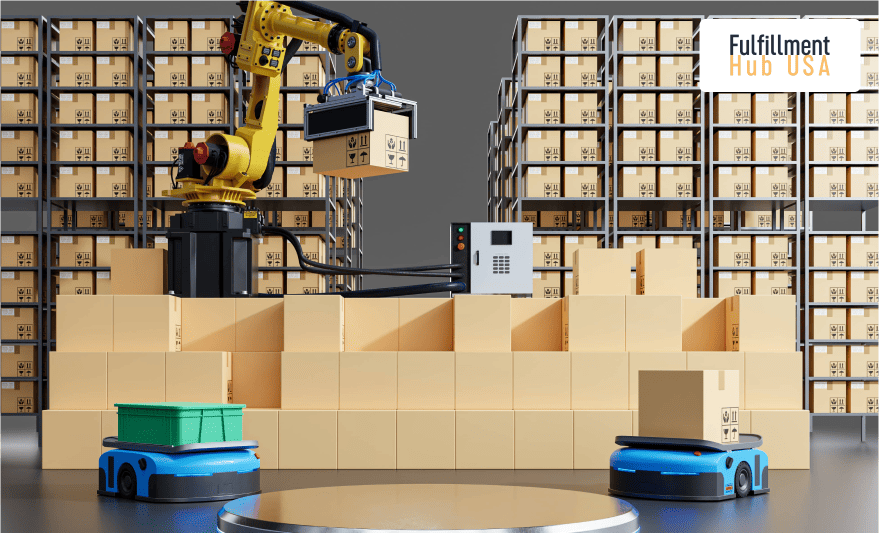Fulfillment By Amazon – What it is and How does it Work?
Selling on e-commerce platforms has never been an easy task. It becomes even more difficult if you are a solo entrepreneur and handling all the aspects of your business alone. You need to manage marketing, ads, storing, shipping, and much more. Sounds hectic, right? Relax! FBA is your one-stop solution. FBA not only makes online selling easy for you but also exposes your business to a wide range of customers. According to a report, Fulfillment by Amazon helps sellers to increase their sales by 30% to 50%. The data reflects that FBA is one of the best programs to take your business to the next level. Sounds interesting, right? Continue reading the article to find out all about FBA and get started. All About FBA Selling on e-commerce platforms has never been an easy task. It becomes even more difficult if you are a solo entrepreneur and handling all the aspects of your business alone. You need to manage marketing, ads, storing, shipping, and much more. Sounds hectic, right? Relax! Fulfillment Hub USA is your one-stop solution. FBA not only makes online selling easy for you but also exposes your business to a wide range of customers. According to a report, Fulfillment by Amazon helps sellers to increase their sales by 30% to 50%. The data reflects that FBA is one of the best programs to take your business to the next level. Sounds interesting, right? Continue reading the article to find out all about FBA and get started. What is FBA? Fulfillment by Amazon or FBA is a service offered by Amazon for third-party sellers with the intent to automate their shipping services and order fulfillment process. It’s an easy and hassle-free concept: Sellers sell, Amazon fulfills, and ships. If sellers enroll for FBA, then Amazon handles shipping, product warehousing, and returns and refunds for them. Moreover, Amazon also takes care of the picking, packing, and replacement for the sellers who take the FBA service. In this service, all sellers have to do is send their products to Amazon, which then processes all the orders that come in. Sellers need to make sure that Amazon has proper stocks of their products and the rest is taken care of. Now you must be thinking, do sellers have to pay any fee to Amazon? The answer is yes. In return for that fee, you get amazing services by Amazon, including: 24/7 customer service. Access to the most impressive and advanced fulfillment network. All the picking, packaging, shipping, and fulfillment costs are included in this service. Starting an e-commerce business can be a daunting task without the right platform. Amazon offers opportunities to various businesses to sell online in a hassle-free manner and reach a broader spectrum of audiences. FBA is always a good choice for most of the products but might not be an ideal solution for large dimension products or low-volume items. Though it offers amazing selling opportunities, it is not the best solution for every seller. Now the question is how to decide whether it is a good solution for you or not? Relax! We are here at the rescue. Lets’ dig into the features, pros, and cons of FBA to make a well-researched and better decision. Fulfilled by Amazon (FBA) Vs. Seller Fulfilled Prime (SFP) In order to better understand what FBA is and what its benefits are, let’s first understand the primary differences between seller fulfilled prime and FBA. If you want to sell your products to valuable Prime customers, but are not willing to pay the fees for FBA service, then you can opt for a Seller-Fulfilled Prime account. In this account, you need to handle the fulfillment of your orders and products. To succinctly describe, you get access to Amazon Prime name and shipping guidelines; however, you have to handle fulfillment, picking, packing, and shipping on your own. In addition to this, when you opt for Seller Fulfilled Prime, you have to take care of all the returns, refunds, and shipping costs. However, when you choose FBA, Amazon takes care of all the shipping costs for you. Here are some of the major differences between FBA and SFP. S.no SFP FBA 1. Sellers have to pay all the shipping costs Amazon handles the shipping costs. 2. Sellers have to take care of pick, pack, fulfillment, and shipping. Amazon takes care of fulfillment, pick, pack, and shipping. 3. Sellers are responsible to handle inventory and storage in SFP. In FBA, Amazon handles storage and inventory for the sellers. 4. Sellers need to pay for multiple things like inventory, shipping, and returns. In FBA, sellers need to pay only pay once i.e. the fee and Amazon takes care of the rest of the things. 5. SFP programs are a bit complicated and hectic as sellers need to handle everything from packing to shipping. FBA programs are easy and hassle-free, as all you need to do is send your products to Amazon and pay the fee. In both the programs, sellers need to work with Amazon’s guidelines and rules related to returns, refunds, exchanges, and other things to match the standards customers are expecting from Amazon. Ultimately, in SFP, the sellers need to do a lot of work; therefore, small sellers and brands opt for the FBA program. It is the best way to expand your business and boost profit margins. Pros and Cons of FBA In order to decide whether FBA is the right pick for your business, it is better to go through the pros and cons. It will help you know what is best for your business according to the current situation. Pros of FBA Fulfillment by Amazon is profoundly beneficial for small sellers and new retailers seeking a larger marketplace. Moreover, it allows you to extend your customer base and boost your profit margins. That’s not it. Here are some of the major advantages of FBA. Discounted Shipping Rates Amazon is one of the most popular shopping platforms and is a global fulfillment giant. If you opt for FBA, you have to spend less on shipping costs. Therefore, even
Fulfillment By Amazon – What it is and How does it Work? Read More »









